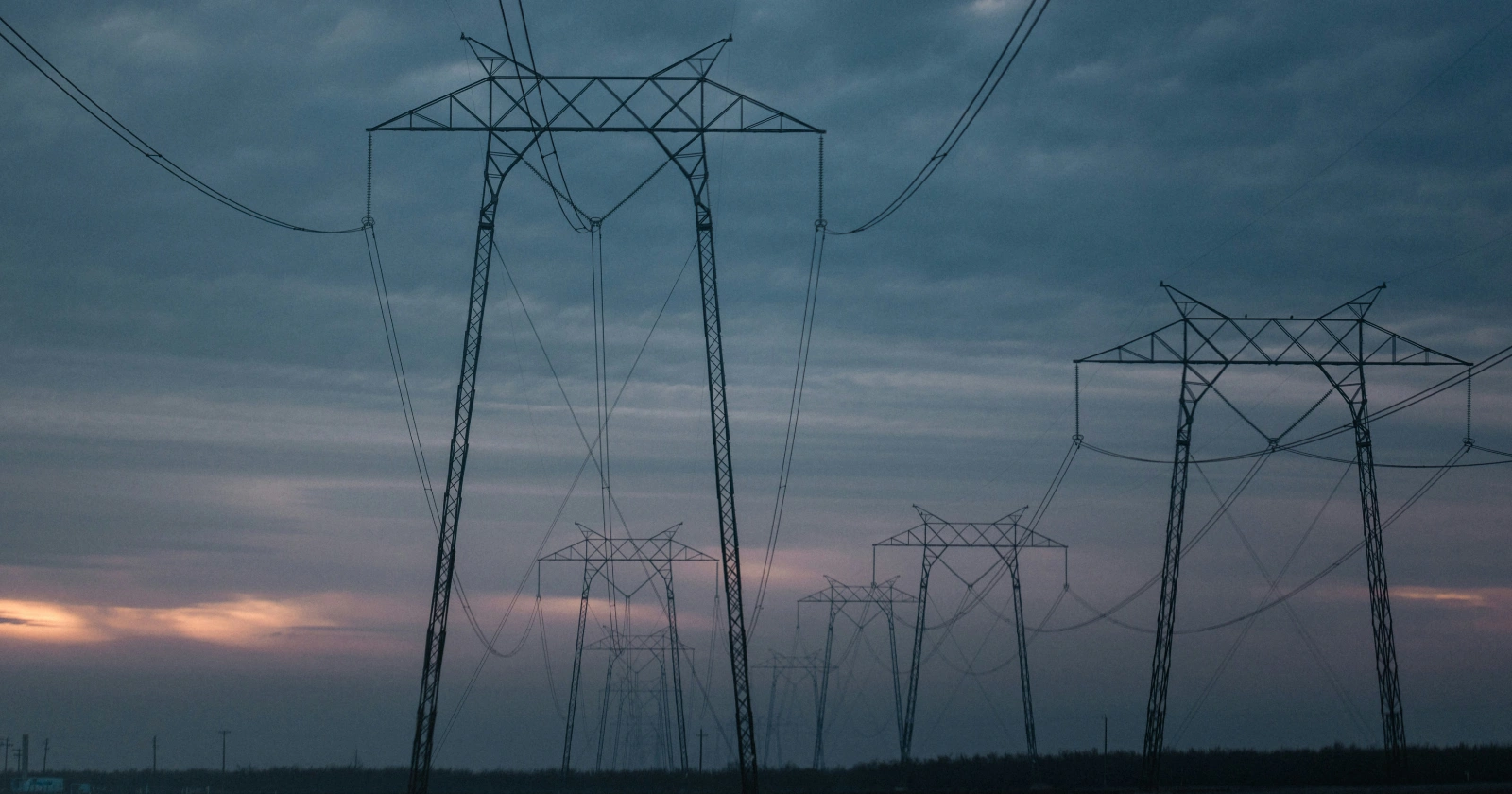Artificial intelligence stands at the forefront of technological advancement, reshaping industries and daily life with unprecedented speed. From voice assistants that anticipate needs to algorithms that predict market trends, AI’s capabilities continue to expand. Yet, this rapid evolution comes with a significant cost that often remains unseen: an enormous appetite for energy. Data centers housing AI systems operate around the clock, processing vast amounts of information and requiring power levels that rival those of major urban areas.
The scale of this energy demand has escalated dramatically in recent years. Training a single large AI model can consume as much electricity as hundreds of households over several months. This reality prompts a closer examination of how AI’s growth intersects with global energy resources. As adoption spreads across sectors like healthcare, transportation, and entertainment, the infrastructure supporting these systems faces mounting pressure. Projections indicate that without intervention, AI-related electricity consumption could surge, exacerbating challenges in supply and distribution.
Sustainability emerges as a critical factor in this equation. Traditional power sources, often reliant on fossil fuels, contribute to environmental strain through increased emissions. The push for cleaner alternatives gains urgency as stakeholders recognize the long-term implications. Governments, tech companies, and researchers collaborate to address these issues, exploring ways to harmonize AI’s potential with responsible energy practices. This balance promises not only to mitigate risks but also to unlock new efficiencies in power management.
AI’s Soaring Energy Demands
Artificial intelligence relies on complex computations that demand substantial electrical power. Data centers, the backbone of AI operations, house thousands of servers running non-stop. These facilities process queries, train models, and store data, leading to high consumption rates. For instance, a single AI query on a platform like ChatGPT uses approximately 0.34 watt-hours, but scaling this to billions of interactions amplifies the total impact.
Recent statistics highlight the trajectory of this growth. Electricity consumption in accelerated servers, primarily driven by AI, is expected to increase by 30 percent annually in baseline scenarios. In the United States alone, AI power capacity stands at around 5 gigawatts today and could climb to over 50 gigawatts by 2030, matching global demands from just a few years prior. This expansion stems from the proliferation of generative AI tools, which require intensive processing for tasks like image and video creation.
Comparisons to everyday activities underscore the magnitude. Training a large language model might equate to the energy used by an average American household for several weeks. Globally, data centers accounted for about 1 to 1.5 percent of electricity use in recent years, but AI’s share within that could rise from 5 to 15 percent currently to 35 to 50 percent by the end of the decade. Such figures reveal how AI’s integration into cloud computing and edge devices amplifies overall power needs.
Key Drivers Behind the Surge
Several factors fuel this upward trend in energy use. The complexity of AI models has grown, with parameters numbering in the billions for advanced systems. Each additional layer or dataset increases computational requirements, directly translating to higher electricity draws. Moreover, the shift toward real-time applications, such as autonomous vehicles and personalized recommendations, necessitates constant connectivity and processing.
Economic incentives also play a role. Tech giants invest heavily in AI to maintain competitive edges, leading to expanded infrastructure. Data centers in regions like the United States and Europe see demand spikes, with power consumption forecasted to reach record highs in 2025 and 2026 due to AI and related technologies. This growth occurs amid broader digitalization, where AI enhances efficiency in other sectors but at the cost of its own resource intensity.
Geographic concentrations add another layer. Many data centers cluster in areas with reliable power grids, straining local utilities. For example, in Texas and Pennsylvania, big tech facilities face potential grid cutoffs during crises, highlighting vulnerabilities in current setups. These dynamics emphasize the need for strategic planning to distribute loads more evenly.
Environmental Ramifications of AI Power Use
The environmental footprint of AI’s energy consumption extends beyond mere electricity bills. Reliance on non-renewable sources contributes to greenhouse gas emissions, with projections estimating an addition of 1.7 gigatons globally between 2025 and 2030 under existing policies. This volume rivals emissions from entire industries, underscoring AI’s role in climate challenges.
Water usage for cooling data centers compounds the issue. Facilities often require millions of gallons daily, impacting local resources in arid regions. As AI expands, this demand could exacerbate water scarcity, particularly in high-density tech hubs. The carbon intensity of power grids varies by location; coal-dependent areas amplify AI’s environmental toll compared to those with hydroelectric or solar dominance.
Biodiversity and land use also factor in. Constructing new data centers involves land development, potentially disrupting ecosystems. The lifecycle of hardware, from mining rare earth metals to disposal, adds indirect emissions. These multifaceted impacts call for a holistic approach to minimize harm while maximizing AI’s benefits.
Measuring the Carbon Cost
Quantifying AI’s carbon footprint involves assessing both direct and indirect effects. A video generation task in an AI model might consume over 700 times the energy of simpler processes, leading to higher emissions. Studies show that AI-related servers jumped from 2 terawatt-hours in 2017 to 40 terawatt-hours in 2023, a trend expected to continue.
Global comparisons provide context. The United States ranks high in per capita electricity use, partly due to AI and data centers, at 12,741 kilowatt-hours in 2024. This level reflects economic activity but also highlights inefficiencies. Transitioning to low-carbon sources could reduce this footprint significantly.
Challenges in Current Energy Infrastructure
Existing power grids struggle to keep pace with AI’s demands. Utilities face surprises from sudden surges, as seen with companies like NRG Energy raising profit forecasts amid higher usage. Aging infrastructure in many regions lacks the capacity for rapid scaling, leading to potential blackouts or restrictions.
Regulatory hurdles complicate expansions. Permitting new power plants or transmission lines takes years, delaying responses to AI growth. Economic disparities arise, with higher energy costs potentially passed to consumers, affecting affordability.
Technological limitations persist. Traditional cooling methods and server designs consume excess power, reducing overall efficiency. Integrating intermittent renewables like solar and wind requires advanced storage solutions to ensure reliable supply for always-on AI systems.
Grid Strain and Reliability Issues
Data centers’ concentrated loads can overwhelm local grids during peak times. In extreme weather or high-demand periods, prioritization becomes necessary, sometimes sidelining non-essential users. This scenario raises questions about equity in energy allocation.
Global supply chains for energy equipment face bottlenecks. Shortages in transformers and cables hinder upgrades, prolonging vulnerabilities. As AI adoption accelerates, these challenges intensify, necessitating proactive investments.
Pioneering Solutions for AI Energy Efficiency
Innovations offer pathways to curb AI’s energy hunger. Researchers focus on optimizing algorithms to reduce computational needs without sacrificing performance. Techniques like model pruning and quantization lower power draws by streamlining operations.
Hardware advancements play a pivotal role. Specialized chips designed for AI tasks consume less energy than general-purpose processors. Companies report up to 40 percent reductions in training energy through such optimizations. Carbon-efficient hardware selection further minimizes impacts by matching models to eco-friendly setups.
AI itself aids in energy management. Predictive analytics forecast demand, enabling smarter grid operations and reducing waste. In buildings and industries, AI-driven systems adjust usage in real-time, cutting consumption by significant margins.
Renewable Integration Strategies
Pairing AI with clean energy sources addresses dual goals of efficiency and sustainability. Solar and wind forecasting improves through AI, enhancing grid stability. Smart grids leverage AI to balance supply and demand, incorporating more renewables.
Energy storage innovations, like advanced batteries, ensure consistent power for AI. Microgrids in data centers provide localized renewable generation, reducing reliance on central utilities. These approaches not only lower emissions but also bolster resilience.
Policy and Industry Responses
Governments implement policies to guide AI’s energy trajectory. Incentives for green data centers encourage renewable adoption. International collaborations share best practices, fostering global standards.
Industry leaders commit to transparency and efficiency. Google, for example, has reduced median prompt energy by 33 times through advancements. Partnerships between tech firms and energy providers accelerate infrastructure upgrades.
Research investments target breakthroughs. Funding for AI in clean energy optimization yields tools that cut emissions by up to 50 percent in power generation. These efforts signal a shift toward accountable development.
Key Facts and Findings
- AI servers’ electricity use projected to grow 30 percent yearly.
- U.S. AI power capacity may reach 50 GW by 2030.
- Potential 1.7 gigatons added GHG emissions by 2030.
- AI’s data center share could hit 50 percent by decade’s end.
- Up to 40 percent energy savings in model training via new techniques.
| AI Activity | Energy Consumption Equivalent | Source |
|---|---|---|
| Training a large model | 100+ U.S. households for weeks | MIT Technology Review |
| Single ChatGPT query | 0.34 watt-hours | X Post |
| Video generation task | 700x simple process | Technology Review |
| Annual AI server growth | 30% electricity increase | IEA |
| U.S. per capita electricity (2024) | 12,741 kWh | Al Majalla |
Future Outlook for AI and Energy
The intersection of AI and energy holds transformative potential. As technologies mature, efficiencies could outpace demand growth, leading to net positive environmental outcomes. Projections suggest that with aggressive adoption of renewables, AI’s power needs might align with sustainable supplies.
Challenges remain, but opportunities abound. AI could accelerate clean energy deployments, from optimizing wind farms to designing efficient solar panels. This synergy might usher in a net-zero era, where technological progress supports planetary health.
Stakeholders must prioritize collaboration. By investing in research, updating regulations, and embracing innovations, the path forward becomes clearer. The evolution of AI depends on resolving its energy conundrum, ensuring benefits extend to future generations without compromising the environment.
In summary, the quest for better energy solutions in AI reflects broader societal shifts toward sustainability. Balancing innovation with responsibility requires ongoing vigilance and adaptation. As data centers expand and models grow more sophisticated, the emphasis on efficient, clean power will define success. This journey promises not just mitigated risks but enhanced capabilities, where AI serves as a tool for global progress. Ultimately, addressing these needs today paves the way for a resilient, eco-conscious technological landscape tomorrow.
Frequently Asked Questions
Complex computations in training and inference phases require powerful servers running continuously, leading to significant electricity use.
Currently, AI accounts for 5 to 15 percent of data center power, potentially rising to 35 to 50 percent by 2030.
Increased greenhouse gas emissions, water usage for cooling, and land disruption from new facilities contribute to broader ecological strain.
Yes, through improved forecasting and smart grids, renewables like solar and wind can provide reliable energy with lower emissions.
Algorithm optimizations, specialized hardware, and AI-driven management systems can cut consumption by up to 40 percent.
Incentives for green infrastructure and international standards encourage sustainable practices among tech companies.
AI optimizes power generation, grid operations, and industrial processes, potentially reducing overall emissions by substantial amounts.
Global AI electricity could double by 2030, with U.S. capacity expanding tenfold, necessitating rapid infrastructure upgrades.
Some, like Google, share data on prompt efficiency improvements, but broader industry-wide reporting remains inconsistent.
Hybrid models combining edge computing with cloud resources, along with quantum-inspired efficiencies, offer long-term reductions in energy intensity.



